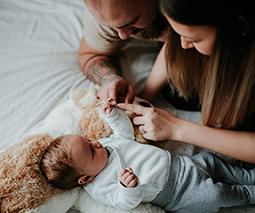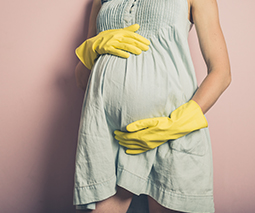The problem with using apps to track your fertility

If you’re trying for a baby, you’re probably already familiar with fertility apps and how they help you plan for pregnancy. While using these can help you pinpoint your fertile days, experts have warned that not all fertility apps are accurate in predicting your fertile window.
Many are saying that women are better off tracking their cervical mucus and having intercourse every two or three days after a period. If you’d prefer the added help from a fertility app, here’s what you need to know.
What fertility apps help you do
There are a lot of fertility apps around, with some helping you track your period and others based on following the physical signs of ovulation. By inputting your previous period dates into the app, it can predict when your next period is due and thus the fertile window in between your menstruation dates. Apps that are ‘sympto-thermal’ require you to track the physical changes in your body that occur around the time of ovulation, for example, your cervical mucus and your basal body temperature.
The methods differ slightly, but both these types of apps aim to measure the same thing: your fertile window of six days.
Read more about fertility here:
- AMH: Can this hormone really predict your fertility?
- Wait! Are experts telling porkies about female fertility after the age of 35?!
- How long can it really take to fall pregnant?
The fertility window
Your fertile window each month consists of the day you ovulate and the five days preceding it. Your egg will only be viable for 24 hours but sperm can survive and fertilise your egg for five days, so having intercourse in the lead-up to ovulation can result in successful conception. Being able to monitor this fertile window can help couples fall pregnant more quickly.
What research found
Recent studies have examined the way fertility apps work and found that not all fertility apps are reliable. In a 2015 study, researchers discovered that 24 out of 30 apps incorrectly identified fertile days. While the results indicated that apps predicting fertile dates differed by only a matter of days here and there, this could prove crucial if you were trying to fall pregnant (or trying to avoid pregnancy!) Researchers leading the study concluded that women are better off getting to know their body and relying on their personal data for predicting fertility.
How fertility apps can help
However, this is where a fertility app CAN help. If you’re trying to fall pregnant, an app can help you understand how fertility works and encourage you to get to know your own body. While several apps miscalculated the fertility window, most of them seemed to predict the actual day of ovulation for users correctly. Becoming aware of this date can help you plan for intercourse in the days leading up to it.
The best way to try for a baby
Expert commentary on the research suggests that women are far better off having regular intercourse in the days following their period. If your cycle is regular, you should have intercourse every two to three days after your period to make sure sperm is continually present in your body – and therefore more likely to meet your egg when it arrives. It’s also recommended that women become more aware of their fertility by observing their cervical mucus, which becomes egg-white and slippery as ovulation nears.
If you want to use an app, go for one that helps you track and record your cervical mucus. Before long, you’ll become familiar with the way your body changes during the fertile window and increase your chances of conception.
If it’s not working
By having intercourse during the fertile period, most couples will fall pregnant within a year of trying. However, if you’re having no luck, or can’t keep track of your cervical mucus, get in touch with your GP or fertility specialist for extra guidance.









